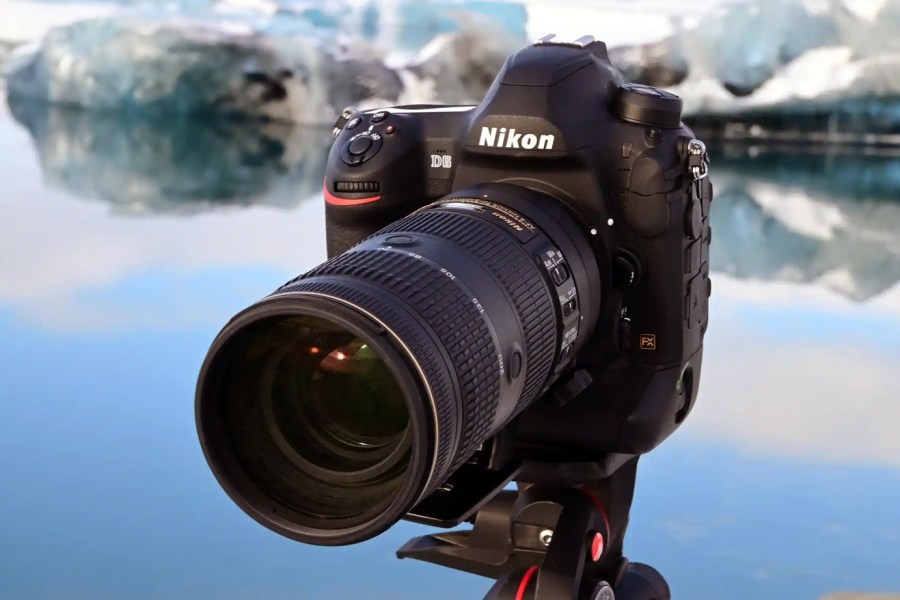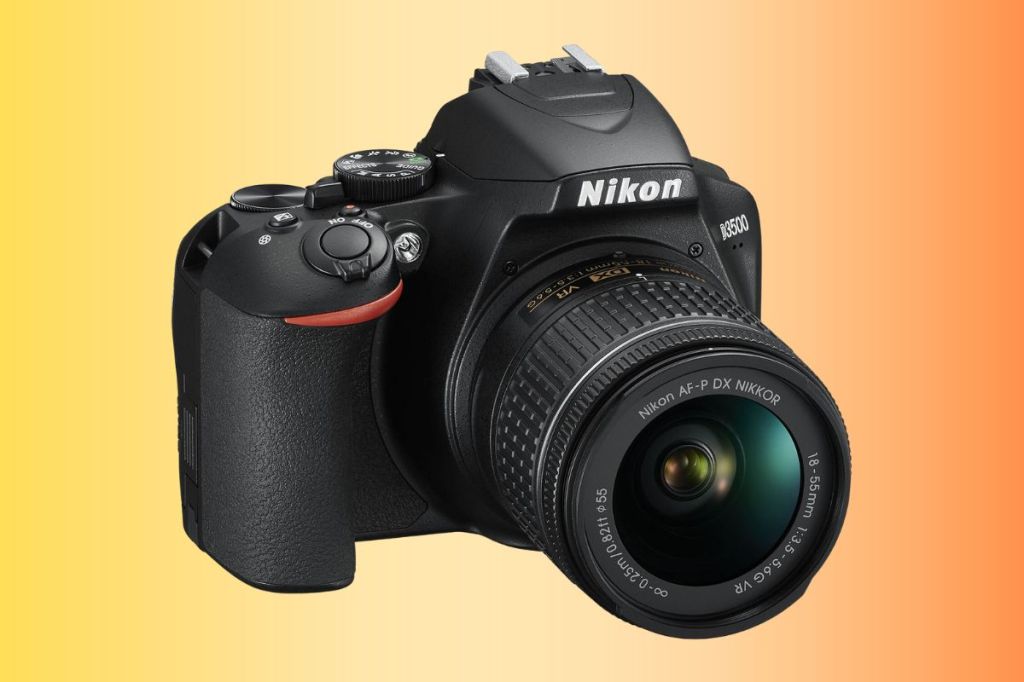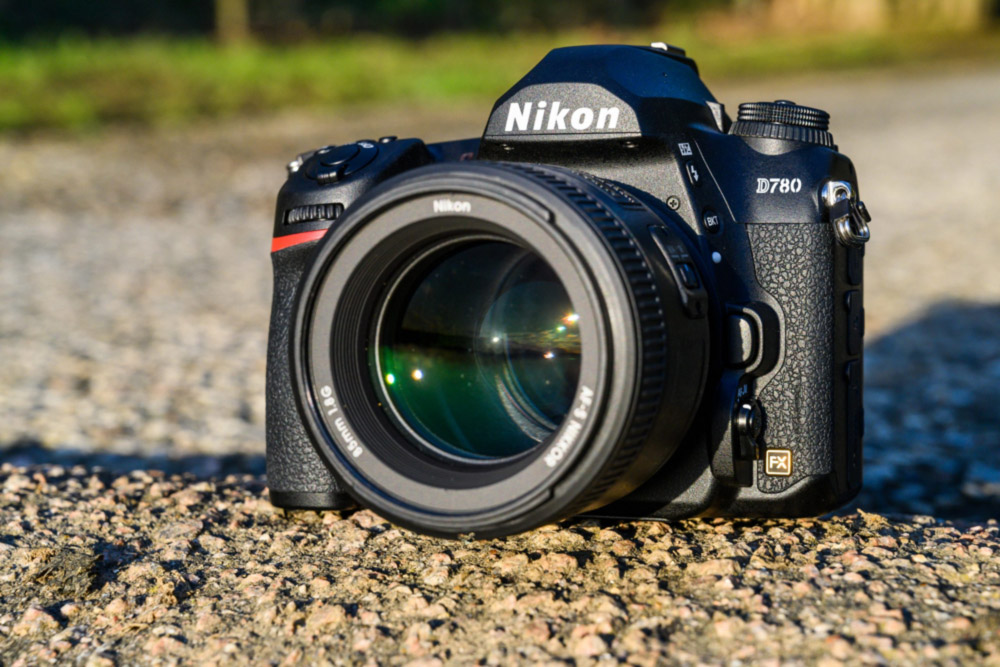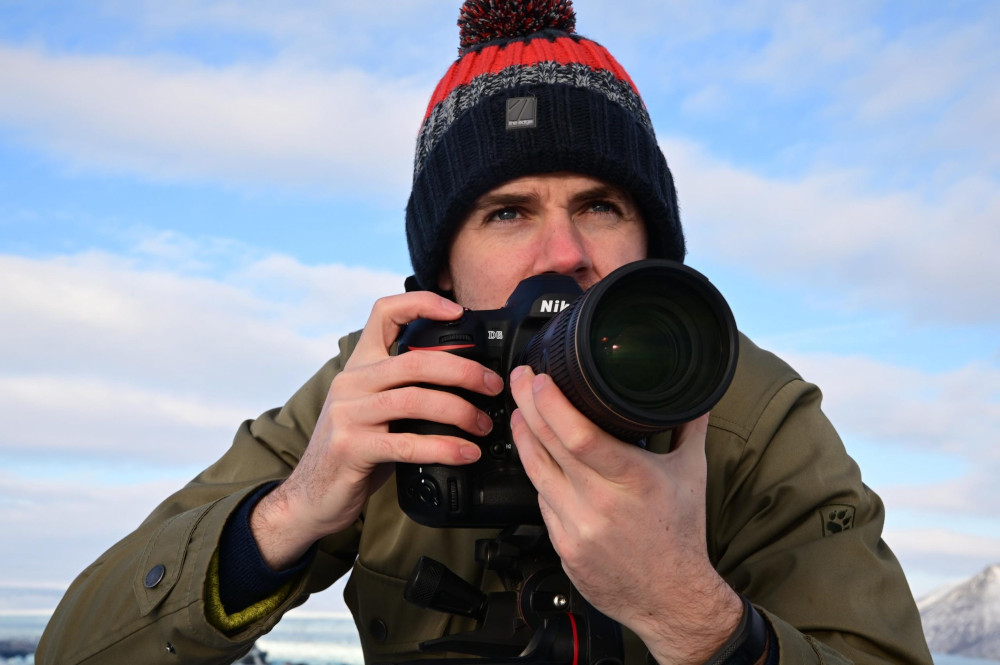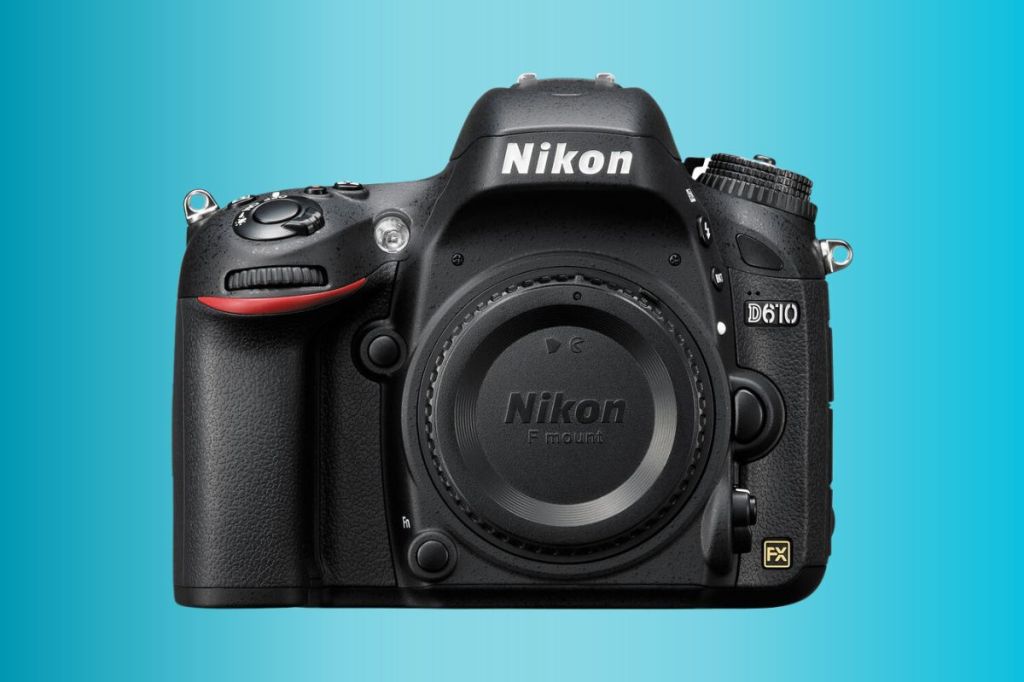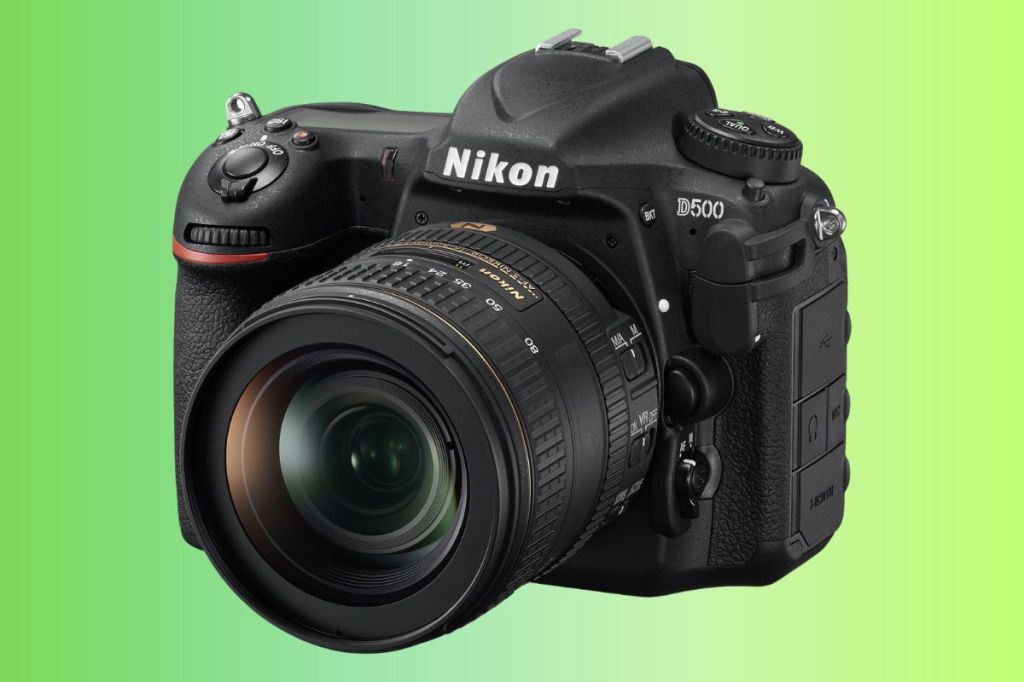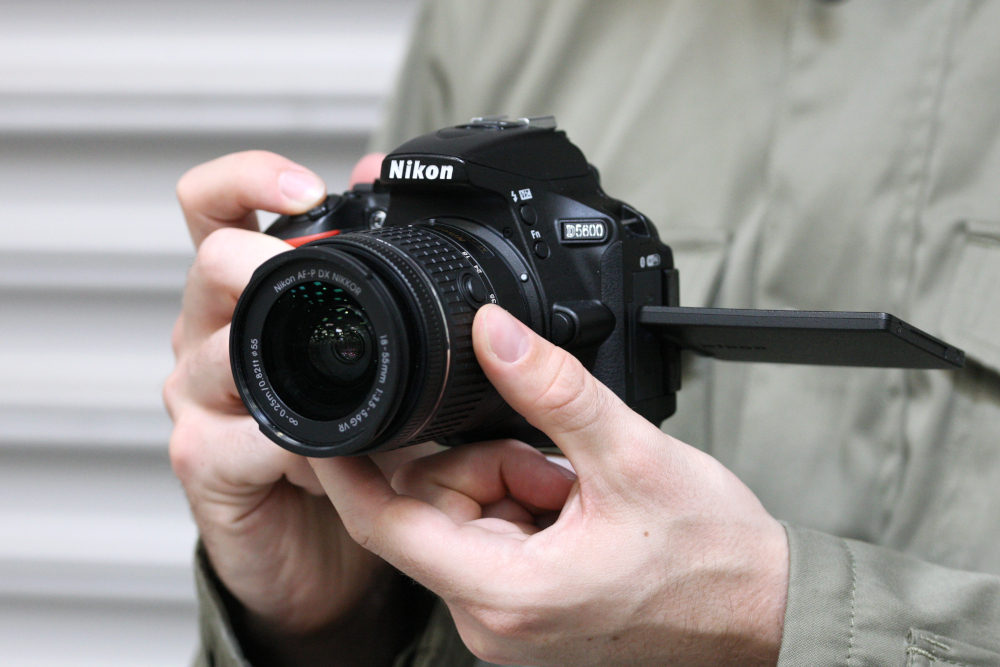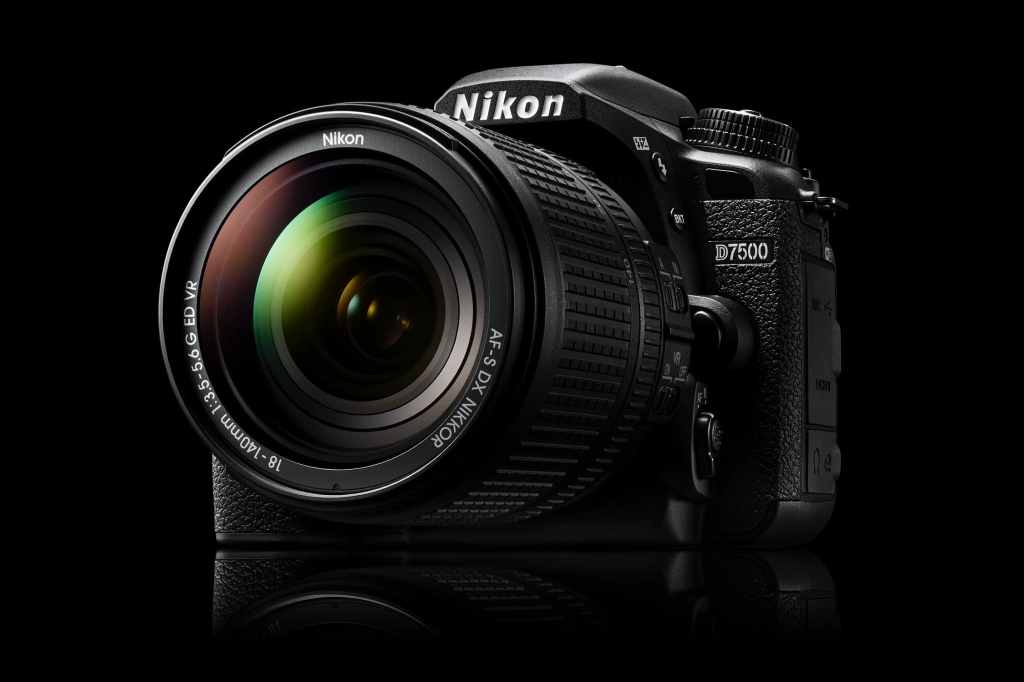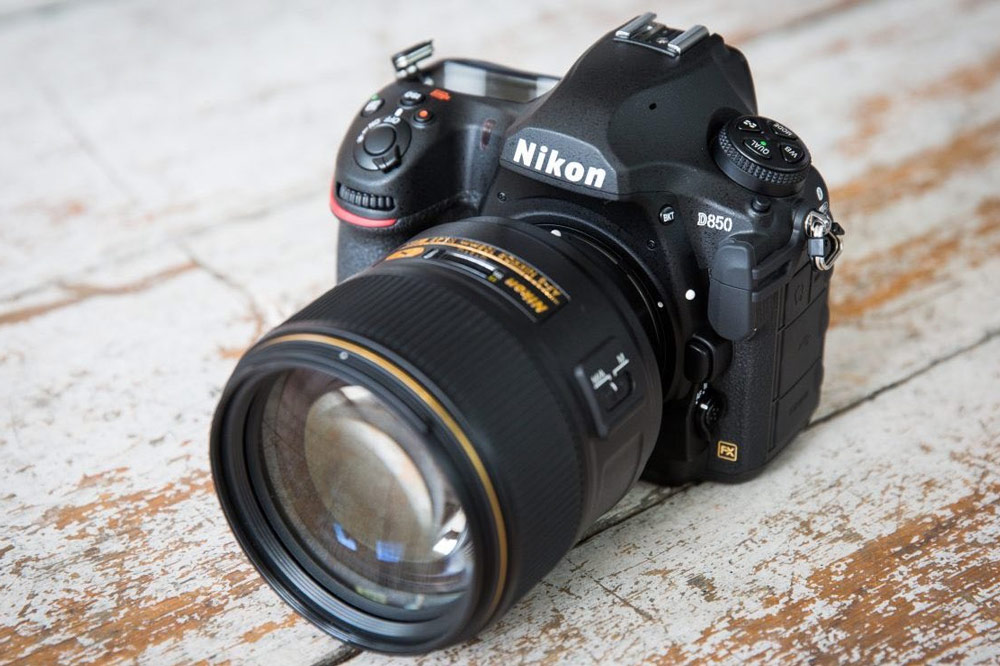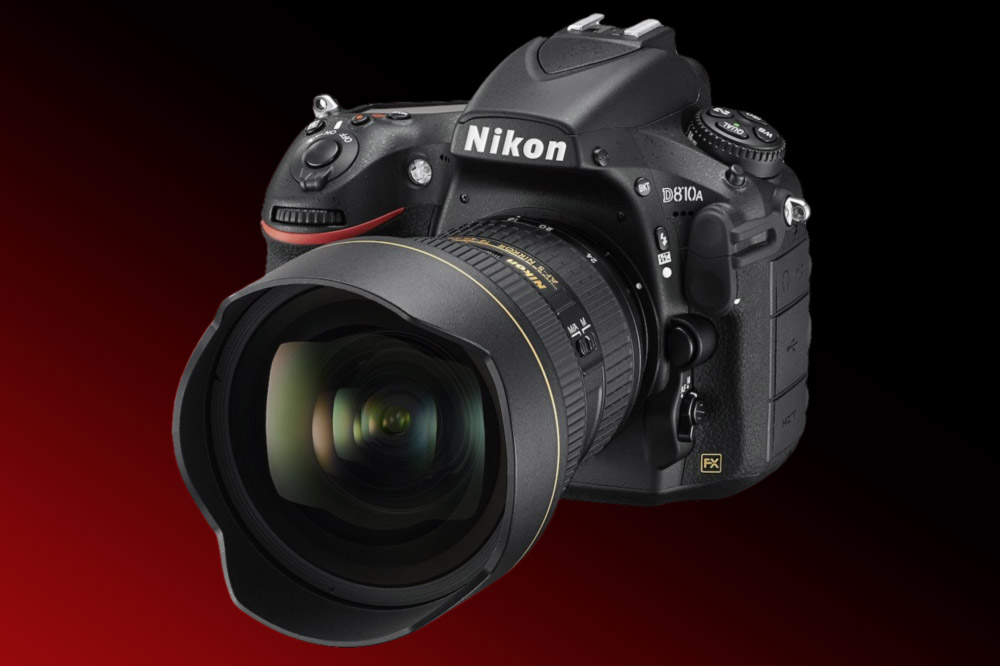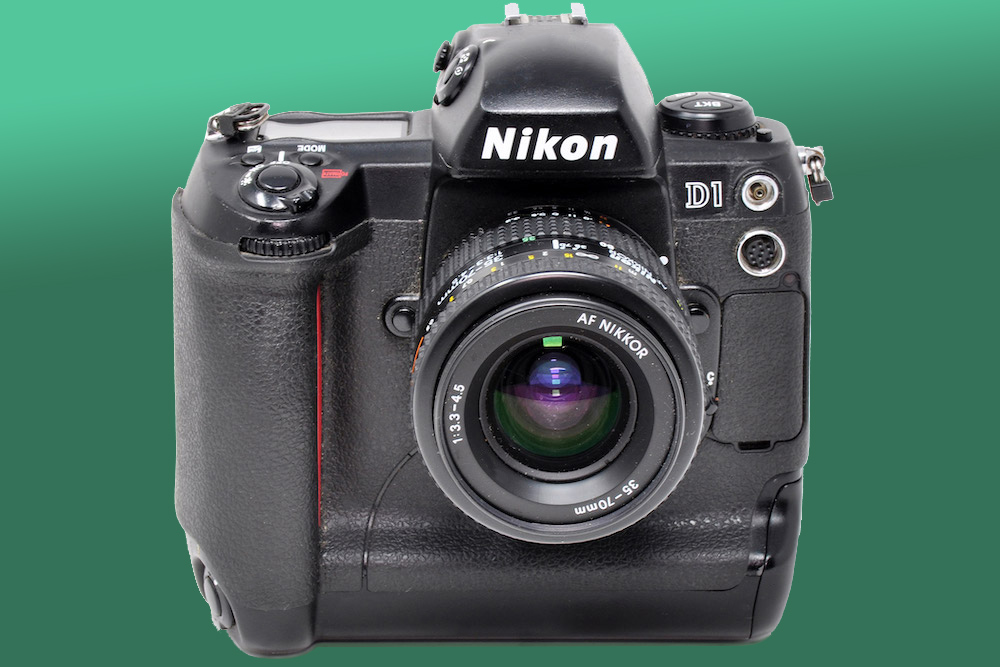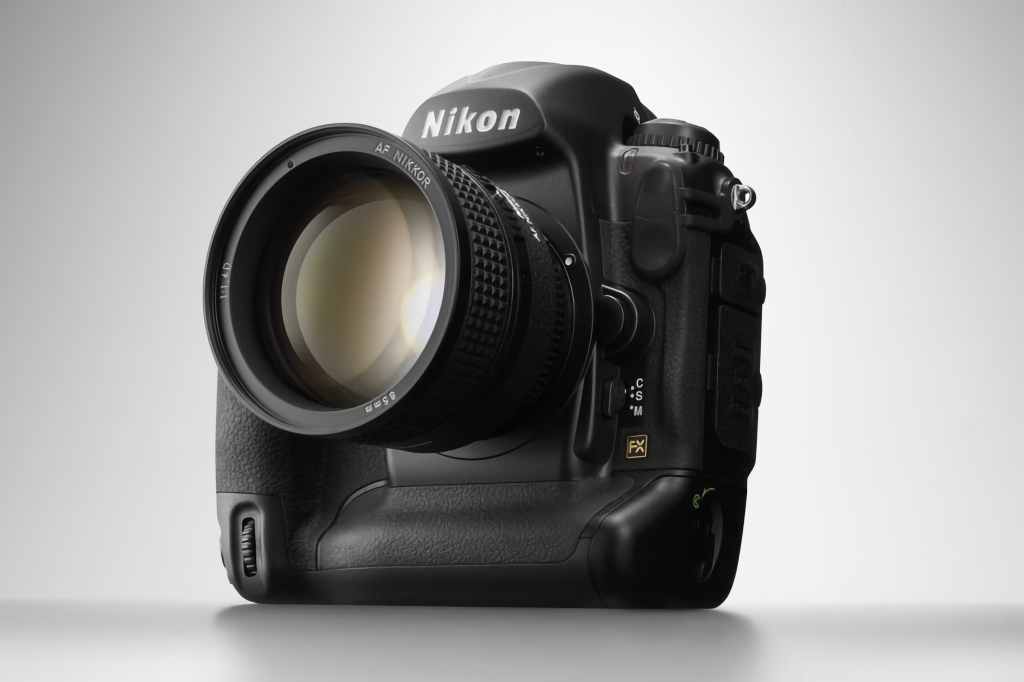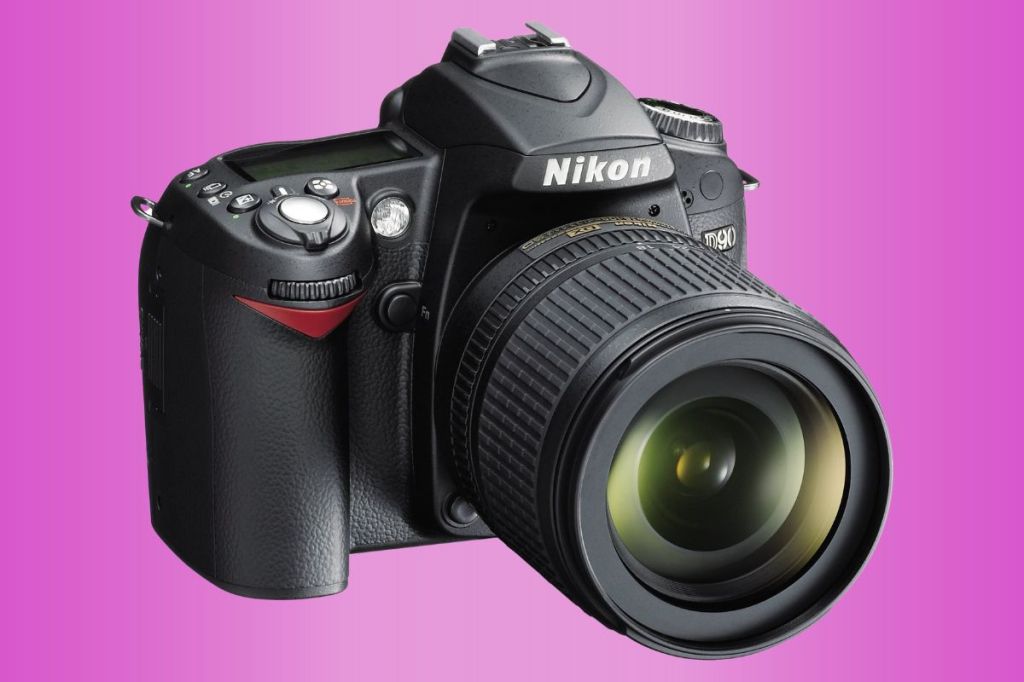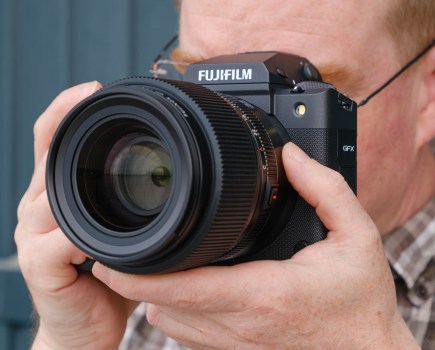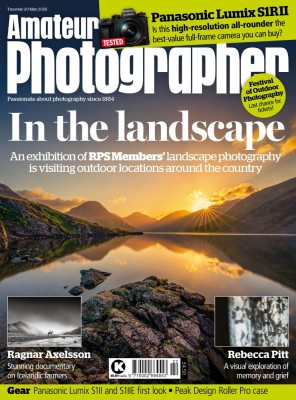Nikon’s best DSLRs are some of the most popular cameras ever made – with good reason. Their rich history in photography and video has been enjoyed by amateurs and professionals alike for decades. No wonder that four of them are on our top-rated DSLR’s of all makers.
Nikon, like others, is more focused on its mirrorless line-up these days. Nikon’s newest, most advanced cameras are its best Nikon mirrorless cameras, having invested heavily in its impressive Z-mount line-up. However, DSLRs still have plenty of fans, with many shooters preferring the immediacy of an optical viewfinder, as well as the incredible legacy of Nikon F-mount lenses.
For this, we’ve taken a broad view of the incredible history of Nikon DSLRs. We’ve picked out the best of them to buy now, but also look back at some of the all-time classics from the firm’s history. Some of these models still make for a great buy on the second-hand market, and save you money.
Check out our guide to DSLRs vs mirrorless to learn more about the difference between the two formats – you can also scroll to the bottom of this page for a guide to how to choose a Nikon DSLR, with answers to some commonly asked questions.
The best Nikon DSLRs to buy in 2025
Looking for the best deal on Nikon DSLR? Not only will you find the best Nikon DSLRs, but also some of the best deals, as our ‘Buy now’ buttons are setup to automatically take you to the best prices from trusted retailers. You’ll also find a list of other retailers below each camera, so you can find the right deal for you.
- Best Nikon DSLR for beginners: Nikon D3500 (2018) – Buy now
- Best Nikon DSLR for sports photography: Nikon D780 (2020) – Buy now
- Best professional Nikon DSLR: Nikon D6 (2020) – Buy now
- Best cheap full-frame Nikon DSLR: Nikon D610 (2013) – Buy now
- Best Nikon DSLR for wildlife photography: Nikon D500 (2016) – Buy now
- Best Nikon DSLR under $500/£500: Nikon D5600 (2016) – Buy now
- Best Nikon DSLR for video: Nikon D7500 (2017) – Buy now
- Best Nikon DSLR for portraits: Nikon D850 (2017) – Buy now
- Best Nikon DSLR for astrophotography: Nikon D810A – Buy now
Continue reading to see why we’ve picked these models. While plenty of Nikon DSLRs have been discontinued, especially the lower-end models, they generally remain available on the used market. So, here are the best Nikon DSLRs you can buy, with options for every budget and ability level…
Why you can trust Amateur Photographer
We spend many hours testing every product we recommend, in detail, in a variety of situations and shooting scenarios, and only use experts for our reviews, so you can be sure that you’re getting the best products. Find out more about our expert writers.
Best for beginners
Best Nikon DSLR for beginners: Nikon D3500
Amateur Photographer verdict
It is a reliable little camera that we have absolutely no hesitation in recommending to beginners.- Guided modes great for novices
- Well-designed body and controls
- Solid all-around specs
- No 4K video
- Not weather-sealed
At a glance
- Used price: $450 / £350 – £400 body-only (variable availability)
- 24.2MP APS-C sensor
- ISO 100-25,600
- 1080p Full HD video at up to 60fps
- 11-point AF system
- 3-inch, 920K-dot LCD screen
For new photographers looking to learn photography on a DSLR, the entry-level D3500 is one of the best options to buy. Its array of impressive features still look solid today, with a 24.2MP sensor, burst shooting at up to 5fps and an ISO range of 100-25,600 that enables the camera to cope well in dim lighting conditions.
Also, to help beginners and less experienced users get to grips with the camera’s controls, a handy Guide Mode presents a series of options to help people handle specific situations. The aim is to explain in simple terms how to use the D3500’s settings to best effect and the Guide Mode offers a choice of ‘Easy’ or ‘Advanced’ shooting scenarios. More experienced photographers can bypass this altogether.
The D3500 also includes Nikon’s Active D-Lighting processing, which is designed to lighten shadow areas and preserve highlight detail when you’re faced with high-contrast scenes. The camera allows you to set Active D-Lighting to ‘on’ or ‘off’ settings.
The D3500 is also notable for having a great body design, a deep grip and an intuitive layout of controls that make it straightforward to use. This is further aided by a Quick Menu screen that flashes up on the LCD screen when you press the ‘i’ button on the rear of the camera – this provides quick and direct access to all of the key settings of the D3500.
Best for sports
Best Nikon DSLR for sports photography: Nikon D780
Amateur Photographer verdict
A full frame powerhouse with cutting-edge tech- Fast phase-detection autofocus
- Does very well in and out of Live View
- Useful touchscreen control
- No AF joystick
- No in-body stabilisation
At a glance
- New price: $1,595 / £1,595 body-only
- Used price: $1,230 / £1,125 body-only
- 24.5MP full-frame CMOS sensor
- ISO 100-12,800 (extendable to 50-204,800)
- 51-point AF system (15 cross-type points)
- 12fps continuous shooting in Live View
- 3.2-inch, 2,360K-dot tilting touchscreen LCD
Launched in 2020, the Nikon D780 blended some of the best mirrorless technology with good-old DSLR handling. It took the same sensor as was found in the mirrorless Z6, and placed it in a rugged body well equipped to stand up to the rigours of outdoor use.
The sensor has a low-pass filter to eliminate moiré and backside-illuminated structure to maximise its light gathering capabilities across its ISO range. And also 273 on-chip phase detection pixels to enhance its focusing performance in Live View. Again, this is said to be crossover technology from the Nikon mirrorless camera line-up.
The D780 also deploys Nikon’s EXPEED 6 image processor which, amongst other things, helps to shoot at 7fps via the viewfinder. A shutter speed range of 30-1/8000sec should cover nearly all subjects (arguably bar speeding bullets). The 180K-pixel RGB sensor inherited from the D850 helps to feed info to the ASF system for accurate and precise tracking of subjects.
For DSLR diehards the D780 offers a superb array of shooting options and choices for capturing all manner of subjects. When AP tested the D780 we gave it a Test Bench GOLD award and said in our original review that it was, ‘a sensational camera that’s built to a professional standard and is a sheer delight to use’… it really doesn’t get much better than that!
Best for professionals
Best professional Nikon DSLR: Nikon D6
Amateur Photographer verdict
Designed for professional photographers who need the utmost speed and reliability- Does really well in low light
- Fast shooting and reliable autofocus
- Deep shot buffer
- Still very expensive
- Much lower res than Z9
At a glance
- New price: $6,497 / £6,799 body-only
- Used price: $3,100-3,650 / £2,400-3,150 body-only
- 20.8MP full-frame sensor
- ISO range of 100-102,400
- 105-point AF system
- Up to 14fps continuous shooting
- Built-in GPS
Nikon’s flagship pro DSLR, and very likely its last, is the wallet-busting D6. A serious price to match the serious specs packed into it. The company describes the D6 as, ‘Nikon’s most powerful AF system yet’ and says it ‘will deliver incredible shots of defining moments… without fail.’
Professional photographers – especially those in news, documentary and sports – want reliable equipment that they can trust to get the shot every time. To secure this, the D6 has a new AF engine with 105 (all cross-type) AF points, Group-Area AF with more custom settings for subject tracking and an eye focusing priority setting in Auto-Area AF or 3D tracking. Later pro mirrorless cameras like the Nikon Z9 built on this with futuristic AI-powered such as Subject-Detection autofocus. The D6’s system may not have these latest bells and whistles, but is very impressive nonetheless.
Powerful ISO performance is another key selling point. The 20.8 MP full-frame sensor works with the Expeed 6 processor to offer ISO 100-102,400 – this is impressive enough, but can be expanded to an astronomical figure of 3,280,000. Other features include fast in-camera Wi-Fi image transfer (15% faster than the D5), Bluetooth connections, higher resolution displays for quick and easy viewing and a robust body.
Discover more about the Nikon D6 pro DSLR
Best budget full-frame
Best cheap full-frame Nikon DSLR: Nikon D610
Amateur Photographer verdict
A well-made, well-thought-out and high-performing full frame DSLR at a very affordable price point- Tremendous value on the used market
- Solid image quality
- Lightweight build and sensible controls
- Dated autofocus system
- Focusing very sluggish in Live View
At a glance:
- Used price: from $430 used / £454 body-only
- Launch price: $1,999 / £1,799 body-only
- 24.3MP FX format sensor
- ISO 100-6400 (extended to ISO 50-25,600)
- Optical viewfinder with 0.7x magnification
- 9-point AF system with nine cross-type points
- 6fps burst shooting
Nikon’s 2012 launch of its mid-range D600 DSLR seemed like a thumping success at first blush – until users started to complain of dust and oil accumulation on the sensor. Nikon offered refunds and servicing for the cameras without ever really explaining the cause of the problem. Then, a year down the line, the D610 appeared – a camera that was exactly the same, except it bore a new shutter mechanism, and the dust/oil problem had mysteriously disappeared. Hmmm.
That’s all ancient history now – the Nikon D610 has been tried and tested for a decade, and with used prices hovering at around a quarter of the original asking, it offers terrific value for money, as one of the cheapest full-frame Nikon DSLRs available. It’s a beautifully built camera, constructed from a blend of magnesium alloy and tough plastic, and it handles well with logically laid-out controls.
The 9-point autofocus is pretty dated by today’s standards, but images captured with the full-frame sensor still look great. The level of detail we managed to capture in raw files at low ISOs was impressive, and the camera generally acquitted itself well up to around ISO 6400 (we wouldn’t recommend pushing beyond that unless there’s really no alternative). Also, if you’ve started with an APS-C Nikon DSLR and have already acquired DX lenses, you can still use them on the full-frame D610 by engaging DX crop mode.
Was the Nikon D610 a hasty marketing exercise and an attempt to correct a mistake without really owning it? Yeah, probably. Is it still a great DSLR? You bet.
Read our full Nikon D610 review to find out what we thought of this camera on release.
Best for wildlife
Best Nikon DSLR for wildlife photography: Nikon D500
Amateur Photographer verdict
A pro camera with an APS-C sensor- Versatile, customisable autofocus system
- Very reliable metering
- APS-C sensor extends lens reach
- Struggles in Live View
- Relatively low resolution
At a glance
- Used price: $879 / from £700 body-only
- Launch price: $1,999 / £1,729 body-only
- 20.9MP DX format sensor
- ISO range of 50-1,640,000
- Up to 10fps continuous shooting
- 153-point AF system
- 3in, 2.36m-dot tilting rear LCD screen
The headline specs of the D500 are, at first glance, quite astonishing – an extended top ISO value of 1.64 million, a 153-point AF system and 10fps continuous shooting (up to 30 raw frames and 90+ JPEGs). That combination of AF possibilities, speed and low-light shooting mark it out as a great camera for shooting wildlife or sports.
The D500’s sturdy body is built from magnesium alloy and it has a variety of customisation options that let you assign certain functions to certain buttons – potentially very useful if you’re shooting fast-moving wildlife or sport.
The 153-point AF system in the D500 was effectively inherited from the pro-spec D5 DSLR and it offers 55 user-selectable points with the rest devoted to help to assist with focus tracking on moving subjects. You can, however, switch to a 3D tracking mode that uses all 153 AF points and works in combination with a 180,000-pixel metering sensor that helps to track the main subject of your photographs.
When AP reviewed the D500 back in 2016 we said, “It’s difficult not to conclude that the D500 is the most accomplished crop-sensor camera yet made.” Whilst it may have been somewhat superseded, the high-spec and quality performance of the D500 has kept it relevant for many years after its launch.
Best under £500
Best Nikon DSLR under $500/£500: Nikon D5600
Amateur Photographer verdict
A great upgrade from a beginner camera, yet very affordable- Autofocus fast, even in Live View
- Small, but tough
- Articulated touch screen
- No 4K
- Focus can struggle to track moving subjects
At a glance
- Used price: $454 / £540
- Launch price: $799 / £799 with kit lens
- 24.2MP APS-C format CMOS sensor
- ISO 100-25,600
- 39-point AF system
- SnapBridge for image transfer to tablets or smartphones
- 3.2-inch, 1.04million-dot LCD screen
The D5600 first catches the eye for its small design which, despite being polycarbonate, is robust enough and can be carried (with any accompanying lenses) quite easily. Indeed, handling is very good with buttons and controls that are well-spaced around the camera.
Dig a little deeper into its spec and you find the D5600 has a large, 3.2-inch vari-angle type LCD screen (with touchscreen control), a 39-point AF system (with a block of nine cross-type AF points in the centre) and a sensor that forgoes an optical low-pass filter – this helps to maximise sharpness and fine detail in images. For AF, the camera is notable for its impressively rapid Live View AF.
Also of note on the D5600 is the Nikon SnapBridge technology, which allows photographers to link the camera to their tablets or smartphones for instant wireless transfer of images. You can also use Snapbridge to remotely control the D5600 and use a Live View feed.
Overall the D5600 offers very good image quality, with punchy JPEGs delivering accurate colours. Higher-sensitivity performance is a notable strength, even right up to ISO 6400. Although it’s been on sale since 2016 the D5600 remains a more than capable option for enthusiast photographers.
Best for video
Best Nikon DSLR for video: Nikon D7500
Amateur Photographer verdict
Combined with a VR lens Nikon’s Electronic Vibration Reduction system makes this crop sensor DSLR a reliable companion for stills and video- Impressive video options
- Effective stabilisation
- Reliable autofocus system
- Only one SD slot
- No touch focus point selection
At a glance
- New price: $897 / £550 body-only
- Used price: around $650 / £550 body-only
- Launch price: $1,249 / £1,299 body-only
- ISO range of 100-51,200
- 20.9MP APS-C sensor, 1.5x crop factor
- Up to 8fps continuous shooting
- 3.2-inch, tilting LCD screen
- 51-point AF with 15 cross-type points
The Nikon D7500 has an impressive array of specs that includes shooting speeds up to 8 frames per second, low light shooting at up to ISO 51,200 (and beyond) and a 51-point autofocus system that’s perfect for locking on to moving subjects. The D7500 inherited its DX image quality from Nikon’s more expensive D500 camera, so you’re effectively getting the same image quality for less money.
In terms of movies, the D7500 offers the options of 4K/UHD shooting at 30p or Full HD 1080p video at up to 60p. Nikon’s Electronic Vibration Reduction system will help to significantly reduce the possible effects of camera shake when you’re shooting movies hand-held.
Also of note in the D7500 is the ability to connect the camera with your smart device using Snapbridge via Bluetooth low energy technology. You can sync photos to your device as you shoot and transfer movies manually via the camera’s built-in WiFi system.
The D7500 offers a superb combination of high-speed image capture, trusty AF and great metering to ensure superb pictures are produced. Add to that its use of the lightweight DX lenses and you have a DSLR system that’s versatile, easy to carry and reliable.
Best for portraits
Best Nikon DSLR for portraits: Nikon D850
Amateur Photographer verdict
A fast, high resolution full-frame with impressive low-light capabilities even at higher ISO settings- High-resolution shooting
- Is great at basically everything
- Hardy construction
- Live View focusing is slower
- Wireless connectivity can be clunky
At a glance
- New price: $2,397 / £2,399 body-only
- Used price: $1,280-1,650 / £1,600 + body-only
- Launch price: $3,300 / £3,499 body-only
- 45.7MP full-frame sensor
- 153-point autofocus system
- ISO 64-25,600 (expandable to 32-102,400)
- Up to 7fps continuous shooting
- 3.2-inch, 2.26million-dot LCD screen with touchscreen control
Since its arrival in late 2017 the Nikon D850 has been regarded by many as the company’s best camera and, for some, remains so today, despite the impressive slew of Nikon Z-series mirrorless cameras launched in its wake.
The D850’s headline specification is arguably its 45.7MP full frame sensor, which puts it close to medium format resolution territory but housed within a DSLR body.
The camera effectively inherited almost all of the AF features of the Nikon D5 DSLR which was primarily developed for sports photography, but the D850 is capable of capturing much more than just sports action. It uses a backside illuminated sensor, which helps to increase the efficiency of the sensor, (thus improving low light performance), and improves peripheral image quality at the edges of pictures. The D850 also has no anti-aliasing filter, which allows for finer detail capture in images.
The D850, still holds its head up very high amongst the best Nikon cameras, despite the years that have elapsed since its launch. The fact that Nikon put a lot of top-line technology into the D850 means it remains a great choice for photographers across a variety of genres – wedding, sports, nature, fashion, portrait, landscape and more. For a full-frame DSLR, it remains difficult to beat.
<strong>Best DSLR for astrophotography</strong>
Nikon D810A
Amateur Photographer verdict
A camera 4x more sensitive to the hydrogen-alpha wavelength, bringing out the true clarity and colours of the night sky.- Specialised astrophotography camera
- Lots of resolution
- Live View preview is great for astro
- Can be challenging to find
- And is expensive when you do
At a glance
- Used price: $3,000 / £2,500 body-only
- Modified infrared cut filter
- 36.3MP sensor
- ISO 100-12,800 (expandable to 50-51,200)
- 3D noise reduction system
- 3.2-inch, 1229K-dot TFT LCD screen
The clue is in the camera’s name – the A on the end of D810A hints that it’s a DSLR that’s suited to astrophotography. In fact, it’s specifically designed for astrophotography thanks to a modified infrared (IR) cut filter that sits in front of the D810A’s sensor – this is four times more sensitive to the H-alpha spectral line (a wavelength of approx. 656nm) than Nikon’s ‘normal’ D810 camera.
This enhanced sensitivity to Hydrogen-alpha long-wavelength light means the D810A delivers an improved capture of infrared phenomena in the sky, such as diffuse nebulae. You can, of course, shoot night skies with other cameras but almost all of them aren’t modified internally to help you to do so straight out of the box.
The Live View system, when in long exposure mode, allows you to preview an image equivalent to the one obtained at 30 seconds and also lets you zoom in by 23x to check focus and the scene in front of or above you. The camera’s intervalometer can shoot up to 9,999 images in a sequence – potentially very useful for shooting time-lapses and star trails.
The fact that the D810A also has a 36.3MP sensor also helps in ensuring you’re able to capture the night skies at high resolutions for high contrast images with minimised false colour. The D810A is a camera that opens up strange new worlds of picture-taking possibilities. Now discontinued, the Nikon D810A can be found on the second-hand market – but it tends to get snapped up very quickly.
Discover more about the Nikon D810A
The best older Nikon DSLRs
Here is a selection of our favourite Nikon DSLRs throughout their entire history, from the very first days of digital SLR photography. These cameras may simply be too old for some users, lacking modern conveniences like stabilisation, subject-detect autofocus or even video. However, these are essential parts of DSLR history, and no list like this would be complete without them. Plus, at second-hand prices, the cameras in this section can be picked up very cheaply indeed – making some of them a credible option for users on a budget…
What about the Nikon DSLR shutter count?
However, be warned, it’s well-worth checking the shutter count on any second-hand DSLR you buy, as the shutter units do fail after enough time. So as well as checking the overall condition of the camera, be sure to ask the seller what the current shutter count is, as this will give you an indication as to how much life is left in the camera.
Nikon D1 (1999) – The first ever stand-alone Nikon DSLR
At a glance
- 2.7MP, APS-C sensor
- ISO range of 200-1600
- 4.5fps continuous shooting (up to 21 shots)
- Shutter speeds of 30-1/16,000sec
- 2-inch, 120,000-dot TFT LCD screen
Launched in 1999, the Nikon D1 seems somewhat quaint by the standards we hold cameras to today, with its 2.7P APS-C sensor, 4.5fps burst shooting and 2-inch LCD screen. However, at the time it had a number of clever advantages that saw it become a popular choice for pro photographers starting to make the jump to digital.
For a start, while the APS-C sensor meant taking a hit in image quality, the 1.5x crop factor it imposed upon lenses provides users with greater effective telephoto reach. On an APS-C camera, a 100mm lens behaves like a 150mm lens, and this can be hugely useful in the world of sports photography. Also, the legacy of F-mount meant that users had a huge range of lenses to choose from, and if they were already on board, all their old lenses would work.
That burst rate of 4.5fps might sound tame next to the blistering 120fps of the Nikon Z9, but it was pretty impressive for the time. The wide shutter speed of 30-1/16,000sec was also a welcome addition. It meant that sports photographers using the D1 could capture pretty much anything.
There were some unusual choices on the D1, like the decision to use the NTSC colour space. This is the system mostly used for American and Japanese TVs, rather than the conventional sRGB of Adobe RGB. It wouldn’t be long before Nikon switched up.
Read about world-beating Nikon cameras
Nikon D3 (2007) – The first ever full-frame Nikon DSLR
At a glance
- Full-frame, 35mm equivalent 12MP CMOS sensor
- Dual Compact Flash card slots
- ISO 200-6400 (boost to 100-25,600)
- 9fps continuous shooting (11fps in DX mode without AF tracking)
- 3-inch, TFT LCD 922,000-dot screen
The Nikon D3 was a milestone all of its own – the first full-frame Nikon DSLR. Nikon called its new sensor ‘FX-format’, a name that would live on into its full-frame mirrorless Z-series cameras.
Pitched at professionals, the Nikon D3 featured the brand new EXPEED image processing engine, enabling such cutting-edge features as 9fps continuous shooting. Which is still pretty good even today, and helped cement the D3’s popularity among professional sports photographers. It also featured a 5:4 ratio mode, and even had an overlay in the viewfinder to help you see what the 5:4 ratio would look like.
Other firsts for the Nikon D3 included Live View mode, enabling photographers to see what the camera was seeing in real time via the rear LCD screen. A 51-point autofocus system rounded out a compelling package. Also, the D3’s magnesium-alloy body was rated for an impressive life of 300,000 shutter actuations, meaning professionals could get plenty of years’ happy use out of it. And they did!
These days, the Nikon D3 can be picked up second-hand for less than £400 or $600. For that price, it’s an absolute steal, especially for wildlife photographers. The camera would also later be upgraded to the D3S, which added among other things a video mode.
Read our full Nikon D3S review to see what we thought at the time. A typical used body-only price is around $200-300 / £100-334.
Nikon D90 (2008) – The world’s first DSLR with video shooting
At a glance
- D-Movie mode for 720p HD video recording
- 12.3MP DX-format sensor
- ISO 200-3200 (expandable to 100-6400)
- Up to 4.5fps continuous shooting
- 3-inch, 920,000-dot TFT LCD screen
While the Canon EOS 5D Mark II was the camera that kickstarted the DSLR video revolution, it was technically Nikon who got there first. Pipping the 5D Mark II to the post by a scant few weeks, the Nikon D90 was capable of shooting HD 720p videos at a cinematic frame rate of 24p. Solidly built and designed for the upper mid-range ‘prosumer’ demographic, the D90 was an impressive DSLR all-around.
With a built-in autofocus motor, the Nikon D90 could use virtually all Nikon F-mount AF lenses in its AF mode – something of a novelty at the time. It inherited plenty of its tech from the D300 and D3 cameras, such as a 12.3MP DX-format sensor, an EXPEED1 image processor, a high-res 920K-dot LCD screen and a viewfinder covering 96% of the frame.
Ultimately, the Full HD 1080p resolution of the EOS 5D Mark II meant that it won over filmmakers, and took its place in history for ushering in the DSLR video era. But the Nikon D90 was still a highly commendable achievement in its own right. A typical used price is around $72-154 / £60-77 body-only.
Read our Canon EOS 550D vs Nikon D90 comparison
How to choose the best Nikon DSLR: FAQs
As with any camera-buying decision, picking the best Nikon DSLR is about weighing up two factors – your budget, and what you want to shoot. You aren’t going to get the best of all features in a budget camera, so it pays to prioritise the specs that will best suit you.
For instance, resolution is best for making large prints of your images, so if this is something you want to do, pick a DSLR with a high megapixel count. However, higher resolution cameras tend to be slower as all those pixels require more processing power. So if you want to shoot fast action or wildlife, it’s best to prioritise fast burst speeds.
A big factor with Nikon DSLRs is sensor size. You have two choices here – DX-format (APS-C) and the larger FX-format (full-frame). Bigger sensors give you greater dynamic range in images, the ability to create shallower depth of field, and better low-light performance, with the main trade-off being that they are often more expensive, and require larger camera bodies. Nikon offers plenty of DSLRs in both sensor sizes – see our full guide to APS-C vs full-frame for a complete run-down of the pros and cons of each.
FAQ: Are Nikon DSLR lenses compatible with mirrorless?
Yes – provided you have the correct adapter. Nikon sells ‘FTZ’ adapters which allow F-mount DSLR lenses to be mounted on mirrorless Z-mount cameras. In most cases, this will be with full functionality of digital features like autofocus and stabilisation. Nikon has released a second version of the adapter, the FTZ II, though it’s basically the same, just with a few tweaks to the design that mean it doesn’t interfere with the battery grip when used with the Z9. If you already have the first FTZ, there’s no real need to upgrade.
FAQ: Which Nikon DSLR is best for low light?
Our pick would be the Nikon D500. With an impressive top ISO ceiling of 1,640,000, as well as generally excellent high-sensitivity performance, this DX-format DSLR does an excellent job in challenging light situations. If you have the budget, you may want to consider a full-frame DSLR like the D850, which also provides impressive quality in low light.
FAQ: Is Nikon discontinuing DSLR cameras?
Essentially yes. While Nikon DSLRs are currently still rolling off production lines, the firm hasn’t developed a new DSLR since 2020, and quite clearly has no plans to. Nikon’s focus is on its mirrorless Z-mount cameras, and this is where we’re going to see new models in the future. Nikon has said as recently as 2022 that it is not planning to withdraw from the SLR market – but none of these denials have ever been accompanied by the announcement of a new DSLR.
While you’ll likely still be able to buy a new Nikon DSLR off the shelf for a few years yet, there will come a time when that will no longer be the case.
How we test DSLR cameras
We test DSLR cameras primarily by using them to take photographs and video in a wide range of real-world situations. We evaluate their control layouts and handling, and the usability of their viewfinders and screens. We assess their autofocus across a range of different subjects and shooting scenarios and check their continuous shooting capabilities.
We also examine the effectiveness of their image stabilisation systems if they have them built-in to the body, like in Pentax DSLRs. Last but by no means least, we critically evaluate the image quality, in both JPEG and raw, including resolution, high-ISO noise, and dynamic range. We then take all these factors into account, along with such things as portability and lens systems, when giving our final conclusion and score. You’ll find the full breakdown of how each camera has performed in our full reviews.
Text by Steve Fairclough, with contributions from Jon Stapley.
Related articles:
- Discover over 70 years of world-beating Nikon cameras
- Best zoom lenses for Nikon DSLRs
- Best DSLR Cameras (all brands)
- DSLR vs mirrorless camera – which is best?
- Canon vs Nikon, who has the longest warranty?

